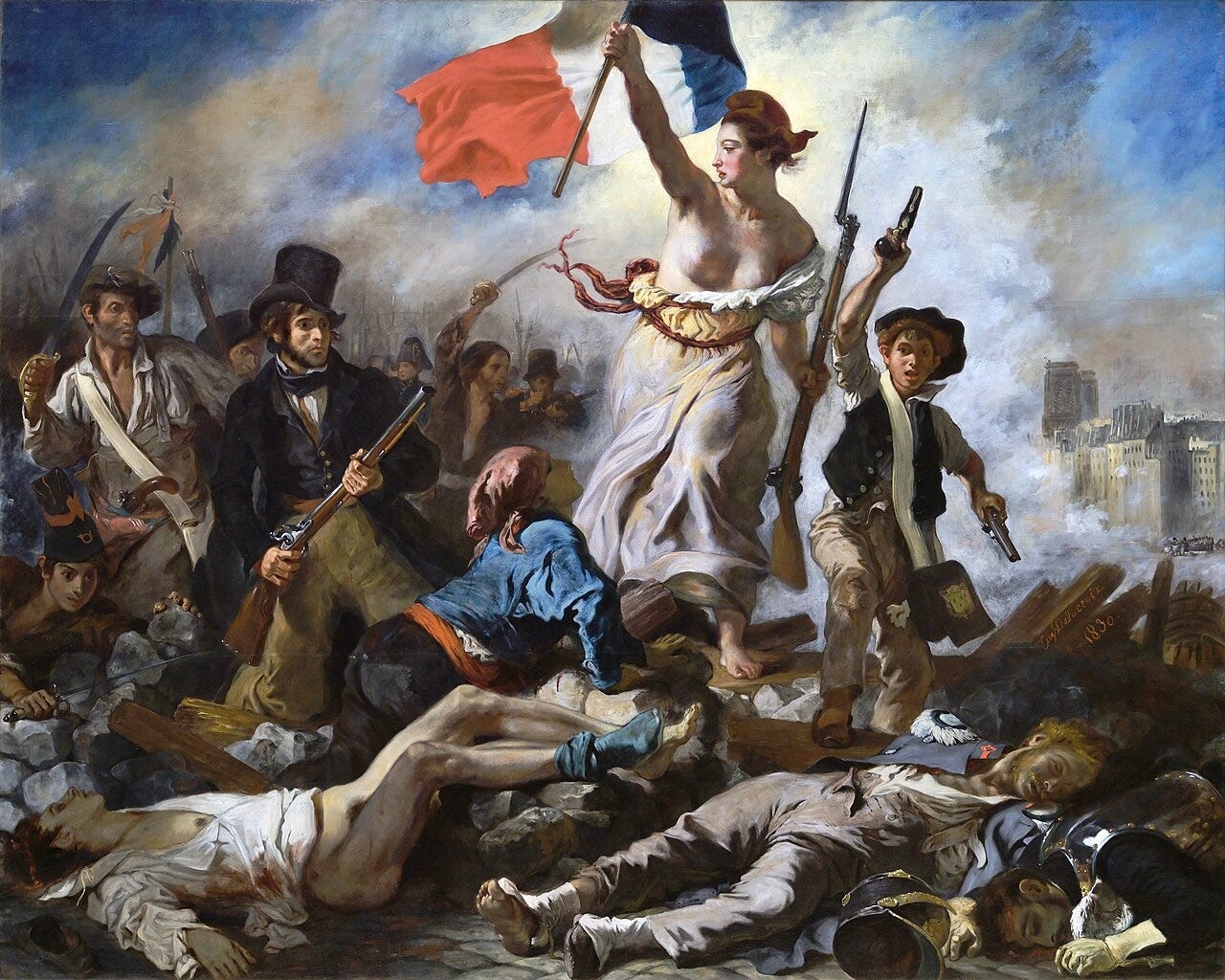Everyone thinks they know this painting.
Plastered on everything from posters to t-shirts to textbooks, Liberty Leading the People has become a visual shorthand for revolution itself. In it, the goddess of liberty leads the French to freedom — she’s armed with nothing more than a musket and the tricolor flag, yet the crowd surges forward and follows her to victory.
It’s easy to see why this image is used to celebrate revolution. It looks heroic. It looks like the triumph of freedom over tyranny. But of course, it’s not that simple.
Look closer, and the picture slowly begins to unravel. Liberty isn’t walking through open fields — she’s wading through death. Her followers aren’t a people reclaiming their country — they’re a mob, bound less by shared vision than by shared fury.
And the woman they’re following? She’s a symbol, yes, but not necessarily a comforting one.
What Eugène Delacroix painted wasn’t so much a patriotic scene as it was a warning. Because in his vision of revolution, freedom isn’t clean. It’s bloodstained, raw, and dangerously seductive.
And his brushstrokes reveal a dark truth about the very nature of revolution itself…
Keep reading with a 7-day free trial
Subscribe to The Culturist to keep reading this post and get 7 days of free access to the full post archives.





